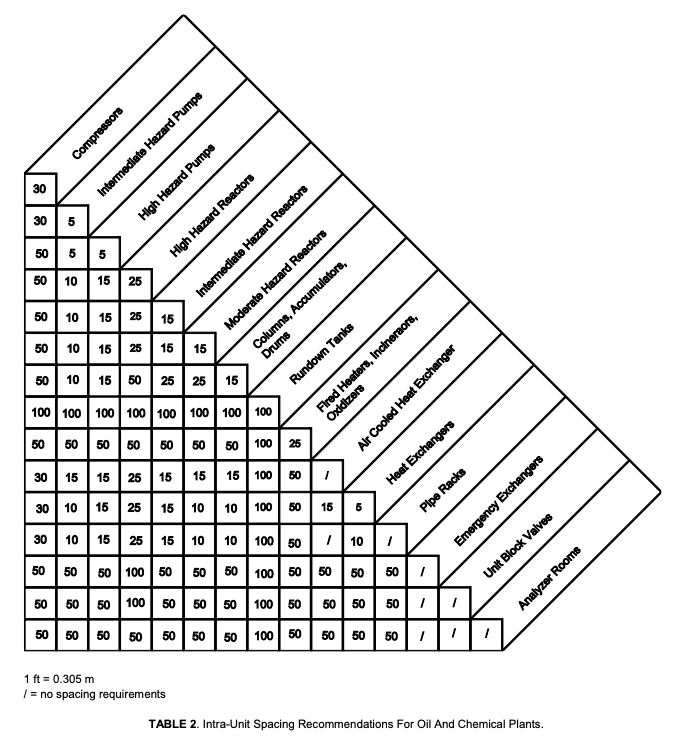10.3.5. RELATIONSHIPS
...
Buffer distances between equipment, such as those seen in Figure 10.1, may be given in general guidelines and are meant to improve safety considerations by the separation of equipment under given circumstances (above, it is fire consequences that are designed for). These are not requirements, and in many cases with proper engineering, safety systems, and safety instrumentation, the amount of distance between equipment could be lower. Likewise, there are many cases where circumstances dictate that the spacing should be increased from the value given in a general table. These may include ambient weather conditions, presence of population (either workers or civilians), or internal guidelines. Furthermore, there may be situations in which the applicable separation distance is not able to be attained. As it states in CCPS Guidelines for Facility Siting, appropriate risk-reduction measures should be taken to alleviate as much risk as possible.
The miscellaneous separation distances that are shown in Figure 10.2 work in the same manner as the process equipment spacing tables in Figure 10.1, but cover different equipment and facilities. As with the equipment separation distances given in Figure 10.1, not all of the miscellaneous spacings may be applicable in a given facility. The same caveats apply to these spacings as well. The separation may have to be larger than prescribed or may be allowed to be lower depending on the situation.
Detailed risk analysis and engineering judgment should be used in any case.

